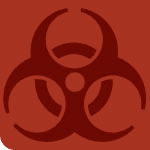
Any time a catastrophic event occurs that is related to an industrial or manufacturing process, there is speculation as to how it could have been prevented. Was it human error? Were the safety standards followed? Did the company know there was a potential hazard?
Many companies equate assuring worker safety with following OSHA mandates. Although OSHA’s regulations apply to a long list of situations, not all environments where hazardous materials are handled are covered. Despite the fact that OSHA has been in force since the early 70’s, there are many vulnerable areas in terms of safety they have yet to address. Then too, with new technologies and products come new hazards.
That leaves the onus to fully protect workers on the companies themselves. To make this easier, SSOE advises its clients to apply “ready-to-use” OSHA procedures voluntarily even to areas or industries that are exempted or are not yet covered. One method for identifying potential safety hazards is a Process Hazard Analysis (PHA) that OSHA requires of companies engaged in the processing or handling of hazardous chemicals.
The Three Ws of a Process Hazard Analysis
PHAs take place in a single meeting, or series of them, and have a prescribed format.
Who participates: Six to eight people who have different perspectives on the plant operation: instrument engineers, mechanical engineers, and maintenance mechanics, for example. For any process covered by OSHA 1910, one person on the team must be a certified facilitator who leads the effort and sets the
standard for the review. For those processes not covered by OSHA, a certified facilitator is very beneficial.
What is involved: The team follows one of several methods to generate a detailed analysis of a facility. One is the “What If?” Using a schematic drawing of the process participants pose a series of “what if” questions as a way of exploring the outcome of certain events. Another method known as the “HAZOP” is more thorough. It starts with a list of variables — temperature, pressure, flow, electricity, and level for example, to which the team applies a sequence of guide words — “less of,” “too much of,” “intermittent” and considers what hazards, if any, would be created by the resulting condition. A scribe captures all the information into a spreadsheet and the facilitator creates a report for the company to review.
When they should occur: Every five years, or when the company makes a change in its process. For new or altered processes, SSOE recommends conducting them when there is still time to modify the design, typically when drawings are 50% complete, so bid packages have yet to be sent out. This saves the lost production time and cost of making modifications to already constructed processes.
How to Make the Most of Your PHA
- Use an outside facilitator. Although you can conduct a legitimate review with a 100% in-house team, an outside facilitator will bring a neutral perspective that allows him / her to be more effective at identifying potential hazards.
- Consider your internal team’s workload and expertise before deciding to conduct it in-house. The outside facilitator can lighten the load on your staff and, if carefully selected, has qualifications and experience that will enhance the quality of the review.
- Select a facilitator that has considerable process design and plant operation experience. He / she will be able to apply this knowledge to your specific process and quickly understand how it works. This also potentially allows you to expand the scope of the review to examine operability standards while you are looking for safety issues. You may uncover ways to make the operator’s job easier.
- If the technology is available to you, use a 3D model to visualize how the process comes together. A fly-though will help you uncover problems more easily and identify appropriate solutions.
- If you are pleased with the performance of an outside facilitator and his / her firm meets your criteria, consider using them to correct your safety hazards. You’ll have the benefit of working with someone who is a step ahead in understanding what needs to be done.
A Final Tip
By far, the best way to end up with a safe process and facility is to design it that way from the onset. When you are selecting an A/E firm to do the design, pay special attention to their experience in highly regulated industries. We found that our expertise in such varied industries as chemical, food, energy, and healthcare helps us develop better solutions in any market.
For more information on conducting PHAs, contact Dick Bentle (rbentle@ssoe.com).
